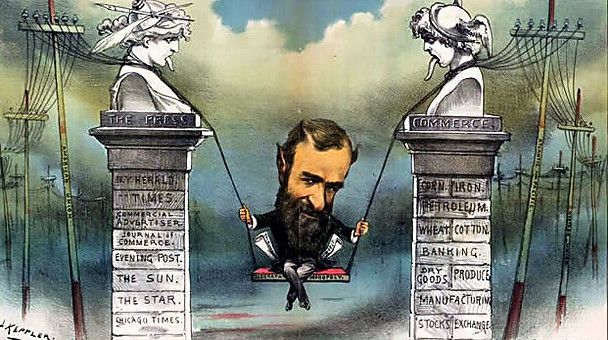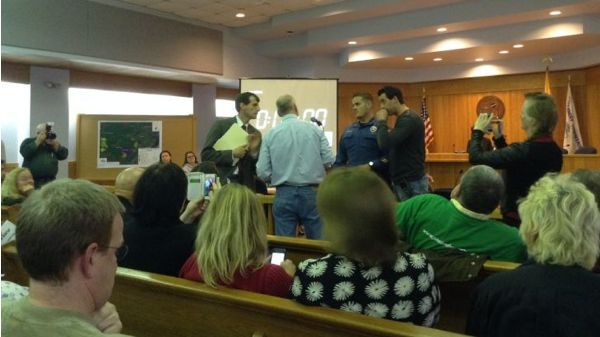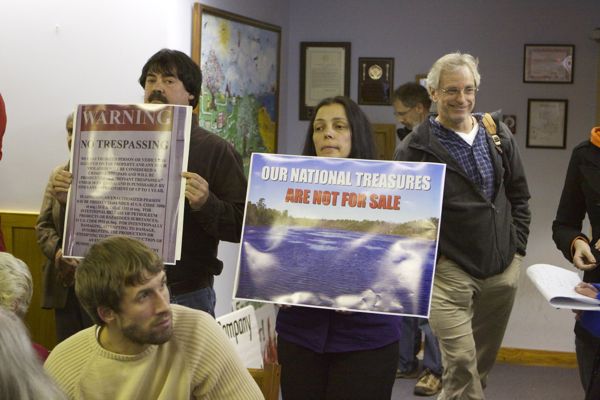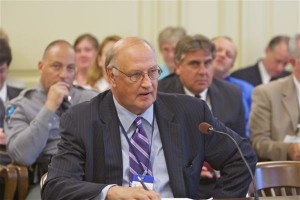Former Head of DEP Air Program Intentionally Misleads Public
Flawed Air Quality Analysis Fails to Consider Climate Change or Emissions From Gas Pipeline
“Maintenance of acceptable air quality in the Pinelands is critical to the protection of public health and welfare, as well as the ecosystem.” ~~~ Source: CMP basis and background document, adopted on November 21, 1980. This line is the first in the chapter devoted to Air Quality (4 pages).
The following unprofessional and flagrant abuse warrants investigation and disciplinary action. I need to get deep in the weeds to make this point, so follow me.
Let me be clear at the outset that I am not talking about legitimate policy or technical disagreements – but outright, wholesale, systematic, intentional, major substantive misrepresentation that borders on fraud.
The issues involve alleged air quality benefits to the Pinelands region resulting from the re-powering of the BL England plant in Beesley’s Point from coal to natural gas.
Pinelands Commission staff have misrepresented this issue intentionally to mislead the public and Pinelands Commissioners. The misrepresentations are not only unprofessional, but border on scientific fraud and official misconduct under State ethics laws.
So, lets take a closer look at the details and chronology of this purported “DEP Air Quality Benefits Study” as I back up that serious charge. In Part I below, we will look at some of the details and then, in Part II, the next post, we will discuss the revealing chronology.
Part I) Technical Misrepresentations
First of all, the document in question is not – repeat not – a “DEP Air Quality Benefits Study”. The “study” was NOT conducted by DEP. Instead, the so called “study” was conducted by a private consultant paid for by the owners of the BL England Plant. According to a DEP September 16, 2013 memo to Wittenberg:
Attached is a description and results of an air quality modeling analysis conducted to assess the air quality benefit of the Repowering Project in the Pinelands Area. The figures in this memo were provided by the environmental consultant AECOM under contract with RC Cape May and under the supervision and approval of NJDEP.
So it is false to call this a “DEP study”.
Second, the scope of the so called “DEP study” is inconsistent with what Wittenberg’s requested in terms of geographical and technical scope of work to DEP. Specifically, in a July 31, 2013 email, Wittenberg requested that DEP conduct an “evaluation of the public benefits” of the repowering to the “Pinelands area”. DEP memo:
In your email dated July 31, 2013, you requested an evaluation of public benefits of the Repowering Projects to the defined Pinelands Area.
But the so called DEP study” did NOT examine “public benefits” – it presented BL England’s views of the “air quality benefit” of repowering – obviously, a “public benefit” is very different than “air quality benefits”, which in this case was narrowly restricted to a sham comparison of coal versus natural gas emission rates.
Third, and the most serious misrepresentation, is the way Ms. Weinberg publicly presented this “study” (on Wednesday December 4 – see this for Wittenberg’s powerpoint).
The presentation of air quality issues begins on slide 13.
Slides 13 -14 are based on the “DEP study”, while the source of slides 15 – 16 regarding historical annual operating hours of the BL England plant is not attributed. However, with no source attribution, the following the “DEP” slides 13-14 and the sequence clearly implies – and was meant to create the appearance – that the data came from the same DEP study summarized in previous slides 13 – 14.
Note that the “study” is now described as “DEP Air Quality Modeling”. Ms. Wittenberg knows that that phrase is a regulatory term of art, with defined technical content. So this description not only implies that the “study” was conducted by the DEP but that it meets DEP’s rigorous air quality modeling regulatory requirements.
I am not making mere semantic distinctions here – Ms Wittenberg clearly understands the significance of this, because she previously served as DEP Assistant Commissioner with management responsibility over the DEP’s air quality planning and permitting groups that actually conduct modeling and impact analysis.
There are several relevant and applicable DEP regulatory Guidance documents on air quality modeling, human health and environmental impact assessment, and power plant permitting, including:
- Guidance on preparing an air quality modeling protocol
- Guidance on preparing a risk assessment for air contaminant emissions
- Guidelines for evaluating proposed emission rates
- Inclusion of Hazardous Air Pollutants (HAP’s) in air permits
- Modeling and permitting for PM 2.5 Sources
- Procedures for conducting risk assessments to determine incremental health risks
- Sources requiring an air quality impact analysis
- State of the Art Applicability for Modified sources (BL England is modified source)
- Risk assessment guidance
The so called “DEP study” Ms. Wittenberg alludes to does not come remotely close to meeting the substantive requirements of ANY of these DEP regulatory requirements for conducting air quality modeling and impact analysis from a power plant.
Ms. Wittenberg KNOWS ALL THIS so she is intentionally misleading the public and the Commissioners regarding what was done and who did it and what it means.
Fourth, it is important to understand the difference between an emission rate and actual air pollution emitted. Generally, emission rates are expressed as pound of pollution per hour. This rate must be multiplied by hours of operation to calculate pollution emissions.
This distinction is critical to understand the opponents argument that, even with lower emission rates of natural gas compared with coal, pollution will increase due to increased plant operation.
(and this does not include the actual health impacts and risks of those emissions, which the so called “study” does not even attempt to consider, which is another major flaw outside the scope of this analysis).
The so called study is based exclusively on pollutant “emission rates of criteria air pollutants” from coal fired versus natural gas plants. The study states this (@ page 2):
BL England Air Pollutant Emissions – Current and Repowering Project
The Repowering Project will be fueled exclusively by natural gas. By retiring the two existing coal-fired boilers and converting the residual oil boiler into a gas boiler, significant reductions in air pollutant emissions will occur. Table 1 shows the hourly and annual allowable emission rates of criteria air pollutants before and after the Repowering Project. The pre-project PM2.5 emissions were assumed equivalent to PM10. The station’s current permit allowable emission rates were discounted to the limits established in the NJDEP Administrative Consent Order (ACO). The pre-ACO permit allowable emission rates were much higher.
But this so called study DOES PRESENT ACTUAL BL ENGLAND PLANT OPERATING DATA (they must be implied or assumptions in the model).
This is a huge flaw and the public can not verify the findings because of the omission of this critical data on BL England plant operating history and the predicted on line or capacity factors of the proposed repowered gas plant.
However, Ms. Wittenberg’s powerpoint (slides #15 – 16) provide this operating data – but that data did not come from the DEP study. The source of this data is not provided. Nor is the implied use of the data in the so called “study” explained.
It is a highly misleading practice to juxtapose data and findings from a “DEP study” sequentially with data from another source (BL England?) in a way that clearly creates the appearance that the unsourced data was part of the DEP study.
If a scientist did this his reputation would be shot and his paper would never be published. A graduate student could not get away with such misleading crap in a Master’s Thesis.
Fifth, In addition to all this – and this is a HUGE gaping flaw in the air quality review – the scope of the study was limited to “criteria pollutants”, which means that it did NOT address the most important pollutants that will be emitted by the pipeline project – directly and indirectly – greenhouse gases CO2 and methane!
Let’s repeat that: the Pinelands Commission ignored greenhouse gas emissions and their impacts from a major regional fossil fuel project, when:
1) The Pinelands Protection Act and the Comprehensive Management Plan (CMP) provide clear authority, jurisdiction, policies, standards, and regulations pertaining to the air quality and ecological impacts of projects regulated by the Commission – including primary, secondary, induced, and cumulative impacts;
2) The sole – exclusive – stated purpose of the South Jersey Gas Co, pipeline, according to Commission staff, is:
To supply natural gas to the existing Beesley’s Point coal-fired electric generation plant (B.L. England) located outside the Pinelands, in Upper Township
(note that the staff’s stated purpose does NOT include “reliability”, a justification that clearly was post hoc).
3) The South Jersey Gas pipeline will directly emit greenhouse gases, as will the BL England power plant and other gas users;
4) According to the US Forest Service and the Commission’s own scientists, Pinelands forests and ecosystems currently are being adversely impacted by climate change caused by the emissions of greenhouse gases (GHG);
5) greenhouse gases (GHG) have been defined and regulated as “air pollutants” in NJ since 2005;
6) The NJ Global Warming Response Act mandates that statewide GHG emissions be reduced by 80% from 2006 levels by the year 2050 – the Commission’s decisions must be guided by these mandatory emission reductions;
7) current US EPA regulations mandate that gas pipelines report greenhouse gas emissions;
6) current US EPA regulations mandate that gas fired power plants report GHG emissions;
8. there are readily available US EPA adopted GHG emissions factors for regulated activities and sources, including natural gas drilling and gas wells, storage facilities, transmission lines, pipelines, and related infrastructure;
9) proposed EPA regualtions will require GHG emissions reductions from gas power plants;
10) South Jersey Gas Co. voluntarily reports to investors current greenhouse gas emissions:
The US Environmental Protection Agency finalized a Mandatory Greenhouse Gas Reporting Rule, which required LDCs like South Jersey Gas to put in place monitoring and recordkeeping systems that are establishing the baselines for reporting that went into effect in 2010.
SJI management understands that there are risks and opportunities associated with this challenge. Our responsibility to customers and shareholders is to prepare for a carbon-constrained economy in the future. Our company has taken action to better understand the sources and magnitude of GHG emissions for our overall enterprise, including an enterprise-wide GHG inventory completed in 2010. Using this information, we are regularly evaluating options to reduce GHG emissions within our operations and continue developing options for our customers to reduce their emissions as well. We are committed to remaining informed about GHG policy developments and to developing strategies that allow us to capitalize on opportunities stemming from climate change initiatives.
So, to summarize: imagine that – South Jersey Gas is more concerned about climate change and greenhouse gas emissions than the NJ Pinelands Commission!
Part II) Corrupt Chronology
A clear understanding the chronology can explain why all these misrepresentations occurred.
(continued, next post)
[End note: Some have said that climate change is a global – not a local – problem and that this pipeline and repowering project will have invisibly small impacts on the global problem.
That is just wrong thinking, for a number of reasons. But let me offer just one, and use the DEP’s own flawed “air quality study” to refute it.
The DEP and the Commission recognize that reductions in mercury emissions would have positive local impacts resulting from mercury bioaccumulation.
Well, mercury used to be considered a “global” problem too – local emission sources and local impacts were not considered in regulatory reviews – that has all changed.
The local and the global are connected – our regulatory reviews need to reflect that.]






